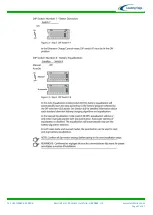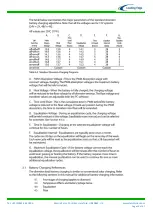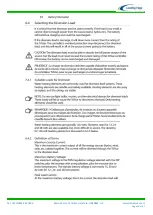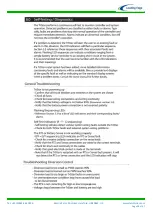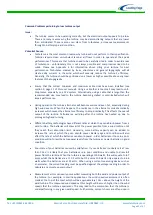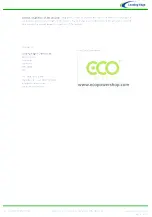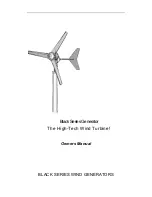
Tel: +44 (0)845 652 0396
Skyrrid Farm, Pontrilas, Hereford. HR2 0BW. UK
www.leturbines.com
Page 45 of 47
Common Problems pertaining to low turbine output
Issue:
The turbine seems to be operating correctly, but the electrical output appears to be low.
There are many reasons why the turbine may be demonstrating outputs that are lower
than anticipated. These reasons can stem from turbulence, erroneous measurements
through to battery type and condition.
Potential Causes:
Turbulence is the most common reason why turbines do not perform to their specification.
Turbines require clean un-turbulent laminar air flows in order to operate at their peak
performances. This means that turbines need to be carefully sited in order to avoid areas
of turbulence - unfortunately this is not always possible and compromises need to be
made. Please see Appendix 4 for information about siting your turbine for best
performance. Turbulence created by trees, structures and general topography will all
create eddy currents in the wind which will severely reduce the turbine’s efficiency.
Generally, the turbine should be positioned on a tower as high as possible above any local
features of the topography.
Ensure that the correct minimum and maximum cable sizes have been installed (see
section 9, page 11 of this user manual). Using a cable that is too small may lead to volt-
drop losses, especially on a 12V system. Alternatively, using a cable that is large than the
recommended size may lead to the turbine becoming stalled or semi-stalled which will
impair performance.
During operation the turbine alternator will become warm and even hot, especially during
high wind events. When this happens, the resistance in the alternator coils dramatically
increases which causes the alternator efficiency to drop drastically. This effects the overall
output of the turbine. Performance will drop after the turbine has heated up due to
prolonged high end running.
Different battery technologies have different rates at which they can absorb power from a
wind turbine. The batteries will draw all of the power possible from a wind turbine until
they reach their absorption limit. Generally, more battery capacity can be added to
increase the rate at which they can absorb power. Battery age and condition will also
affect the rate at which the batteries can absorb power - older batteries or those in a poor
condition will not draw the same power levels from the turbine as newer batteries in good
condition.
Poor state of your batteries caused by sulphation. If your batteries routinely rest at less
than 12.5V it is likely that your batteries are in poor condition and unable to draw full
power from the turbine. When the turbine is operating at 100 watts, this will equate to 8.7
amps whilst the batteries are at 11.5 volts, but the same 100 watts only equates to 6.66
watts when the batteries are at 15 volts. When using a current measuring device such as
an ammeter, the current reading must be qualified against the voltage reading in order to
calculate an accurate power output.
Measurement errors can easily occur whilst measuring both the wind and power output of
the turbine. For example, in marine applications the wind speed measurement is often
made at the top of the mast which will be approximately 10m + above the height of the
wind turbine. The measured wind speeds at this height will be much higher than the wind
speeds that the turbine experiences. This may lead to the assumption that the turbine is
underperforming in any given wind speed. Furthermore, current shunts are often used in
Summary of Contents for GA-LETU-016
Page 47: ......

